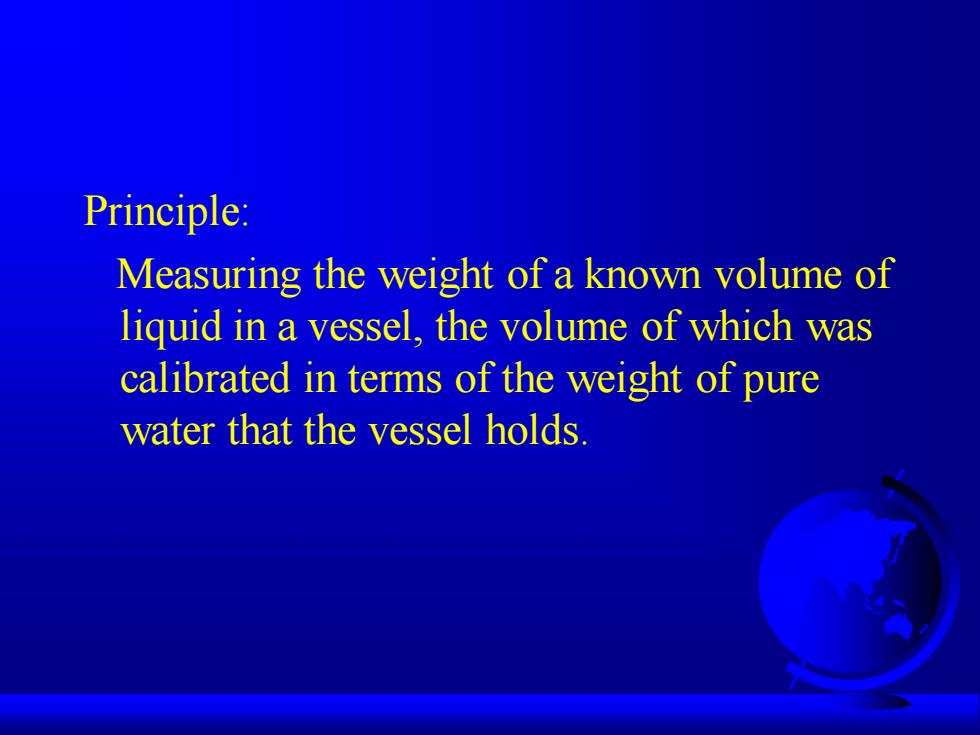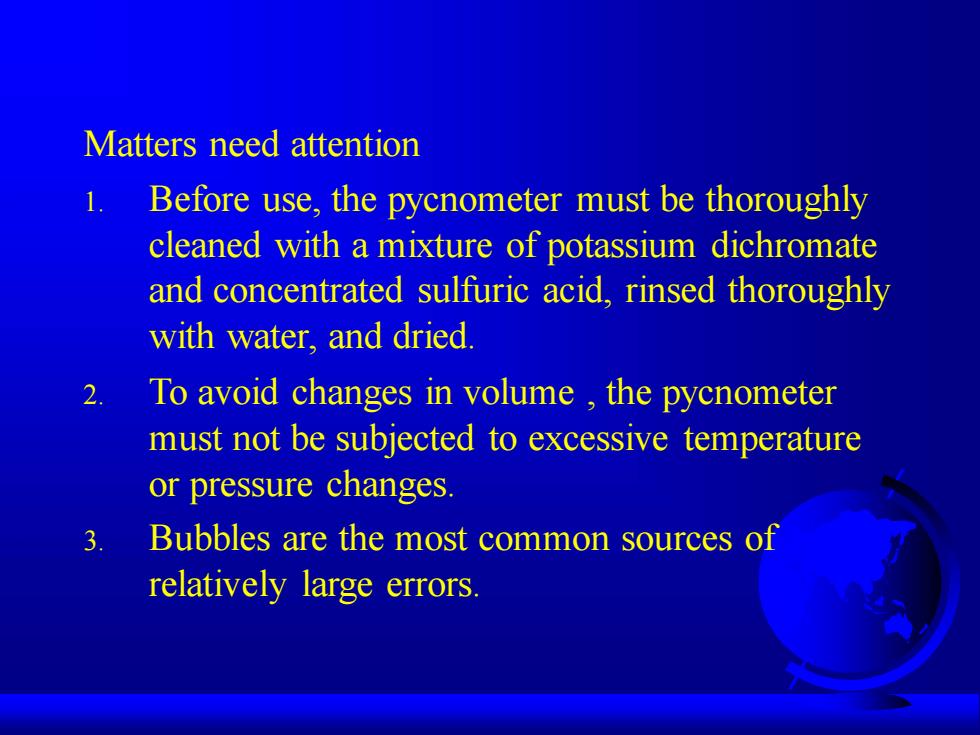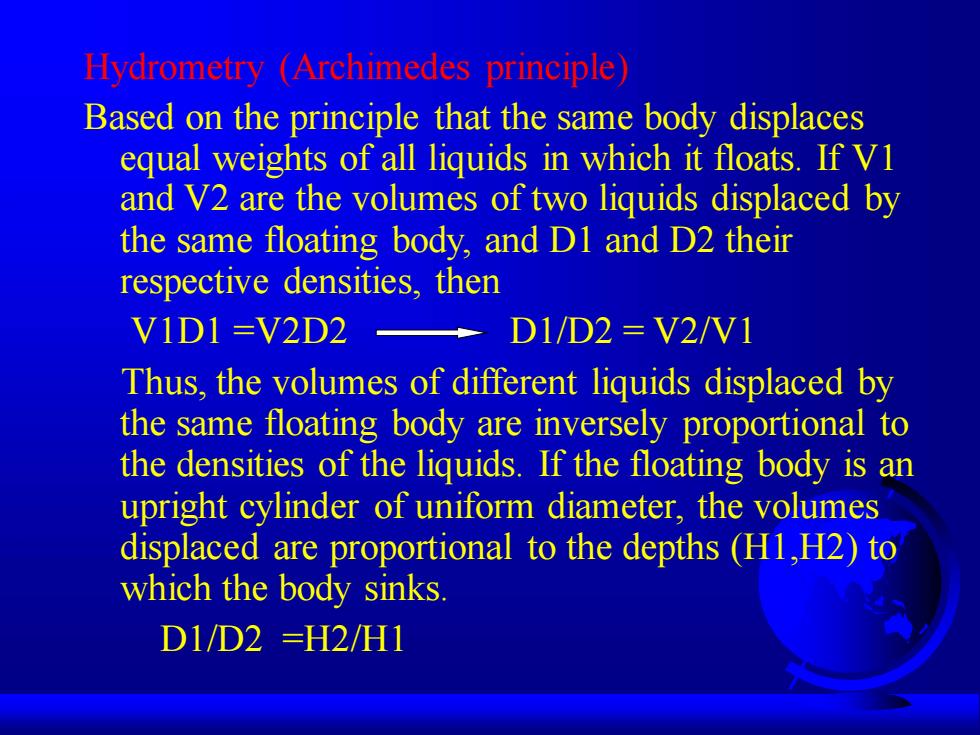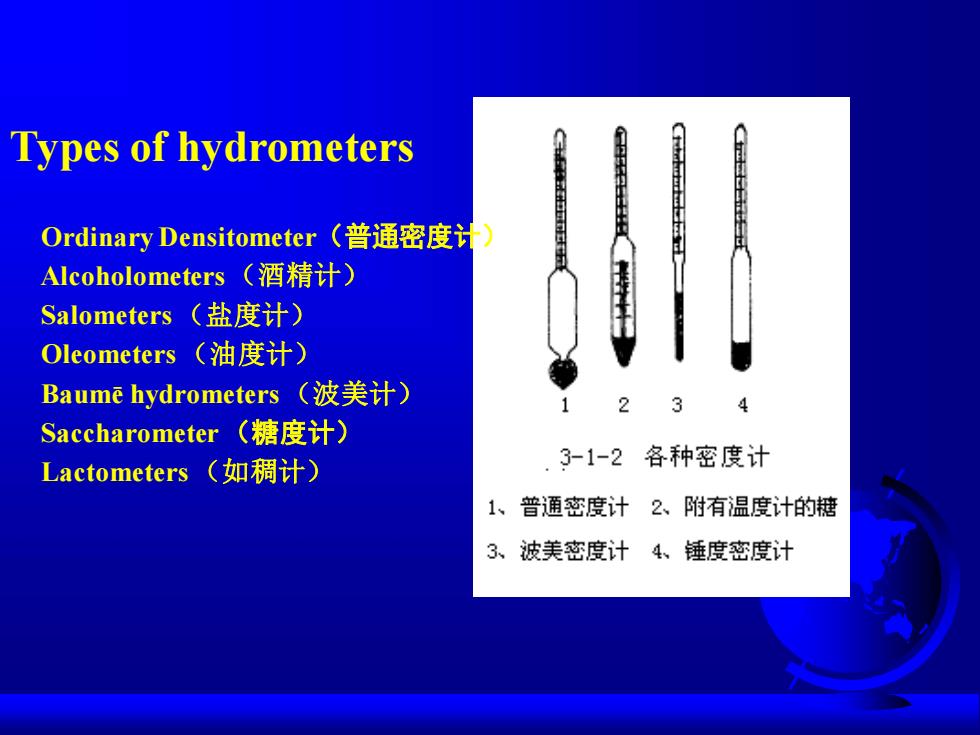
Measurement of the density of liquids Pycnometric Method 1.Types of pycnometer (1)带毛细管的普通密度瓶(2)带温度计的精密密度瓶
Measurement of the density of liquids Pycnometric Method 1. Types of pycnometer

Principle: Measuring the weight of a known volume of liquid in a vessel,the volume of which was calibrated in terms of the weight of pure water that the vessel holds
Principle: Measuring the weight of a known volume of liquid in a vessel, the volume of which was calibrated in terms of the weight of pure water that the vessel holds

Matters need attention 1. Before use,the pycnometer must be thoroughly cleaned with a mixture of potassium dichromate and concentrated sulfuric acid,rinsed thoroughly with water,and dried. 2. To avoid changes in volume the pycnometer must not be subjected to excessive temperature or pressure changes. 3 Bubbles are the most common sources of relatively large errors
Matters need attention 1. Before use, the pycnometer must be thoroughly cleaned with a mixture of potassium dichromate and concentrated sulfuric acid, rinsed thoroughly with water, and dried. 2. To avoid changes in volume , the pycnometer must not be subjected to excessive temperature or pressure changes. 3. Bubbles are the most common sources of relatively large errors

Hydrometry (Archimedes principle) Based on the principle that the same body displaces equal weights of all liquids in which it floats.If V1 and V2 are the volumes of two liquids displaced by the same floating body,and D1 and D2 their respective densities,then V1D1 =V2D2 D1/D2=V2/V1 Thus,the volumes of different liquids displaced by the same floating body are inversely proportional to the densities of the liquids.If the floating body is an upright cylinder of uniform diameter,the volumes displaced are proportional to the depths (H1,H2)to which the body sinks. D1/D2=H2/H1
Hydrometry (Archimedes principle) Based on the principle that the same body displaces equal weights of all liquids in which it floats. If V1 and V2 are the volumes of two liquids displaced by the same floating body, and D1 and D2 their respective densities, then V1D1 =V2D2 D1/D2 = V2/V1 Thus, the volumes of different liquids displaced by the same floating body are inversely proportional to the densities of the liquids. If the floating body is an upright cylinder of uniform diameter, the volumes displaced are proportional to the depths (H1,H2) to which the body sinks. D1/D2 =H2/H1

Types of hydrometers Ordinary Densitometer(普通密度 Alcoholometers(酒精计) Salometers(盐度计) Oleometers(油度计) Baume hydrometers(波美计) 3 Saccharometer(糖度计) Lactometers(如稠计) 3-1-2各种密度计 1、普通密度计2、附有温度计的糖 3、波美密度计4、锤度密度计
Types of hydrometers Ordinary Densitometer(普通密度计) Alcoholometers (酒精计) Salometers (盐度计) Oleometers (油度计) Baumē hydrometers (波美计) Saccharometer (糖度计) Lactometers (如稠计)